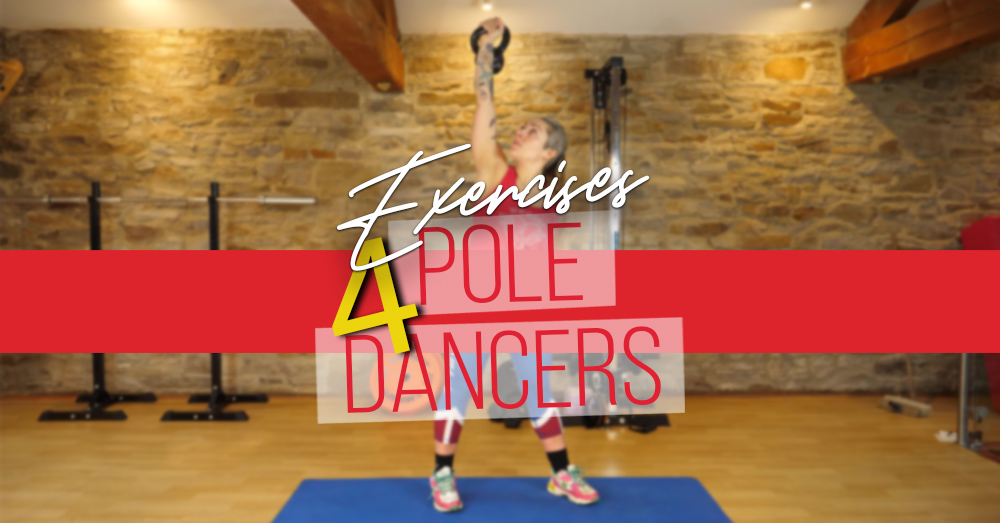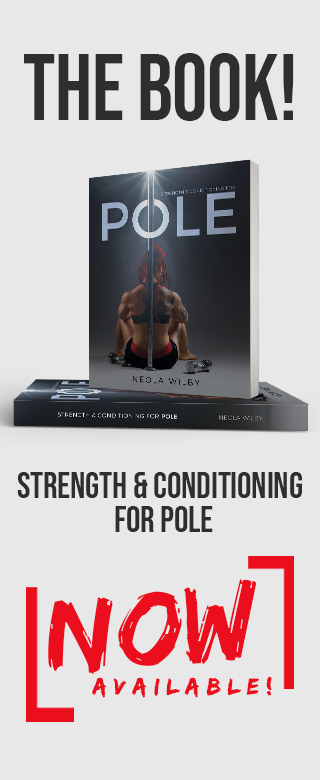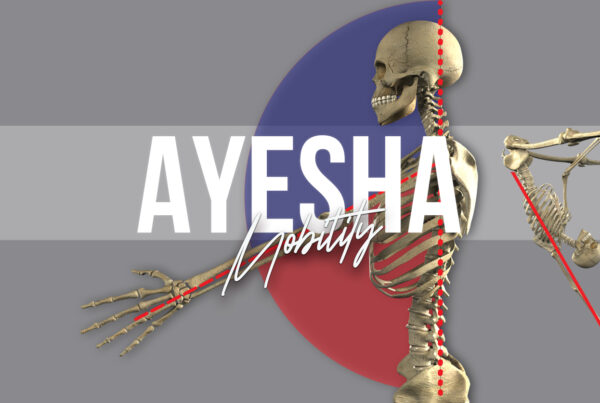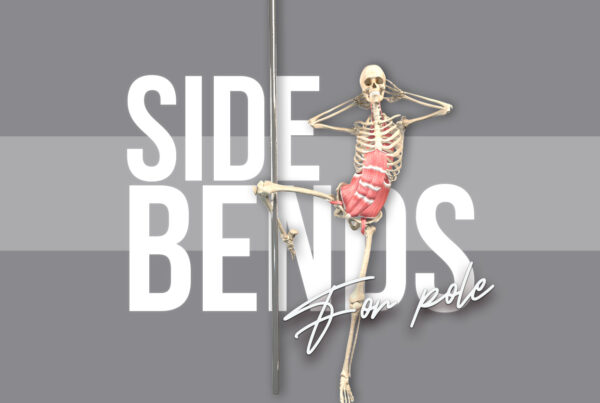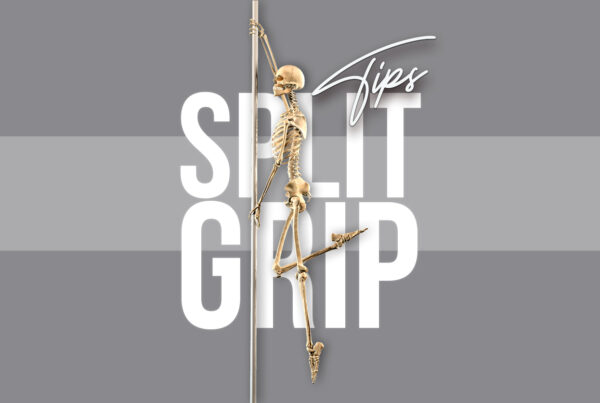The windmill is one of those ‘big bang for ya buck’ kinda exercises – it’s basically a hip hinge in ‘pole dancer’ mode… in other words, it’s a lil’ extra fancy. *Hair swish!*
In this post, I’ll explain the reasons I love using the windmill exercise with my pole dancer clients and give you all the exercise cues and progressions I typically use in my exercise programming.
Let’s windmill!
Before we get into the nerdy details, here’s a quick visual of what the windmill exercise looks like:
Here’s why this exercise can be so useful for pole dancers
Firstly, notice how the ‘hip hinge’ movement in the windmill is slightly outside of the more traditional hip hinge plane that we usually see in the gym.
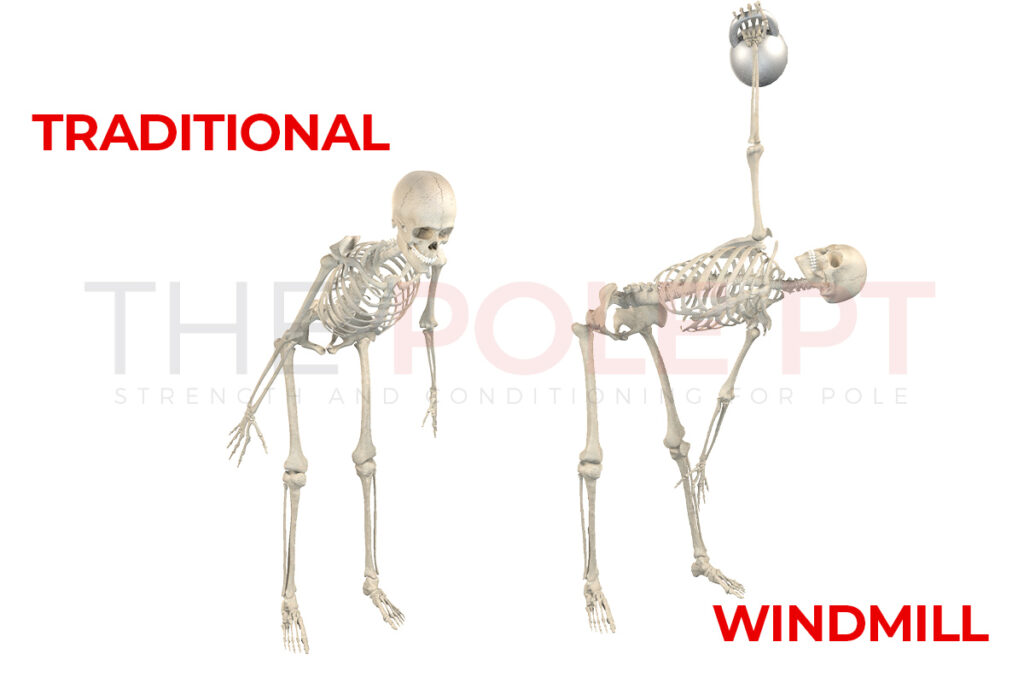
Those more traditional hip hinge variations are also incredibly useful for pole dancers (you probably already know how much I ADORE a single leg deadlift annnd deadlifts and good mornings of all kinds, for that matter), but for those clients who have mastered the ‘bog standard’ hip hinge movement pattern, the windmill is a fantastic progression that adds additional challenge and variety.
Just like more ‘traditional’ hip hinge movements, the windmill works our hamstrings through that lengthened position which is useful for both hamstring strength and flexibility as well as glute strength in hip extension (you can see more about the benefits of that for pole dancers in my ‘single leg deadlift’ blog!).
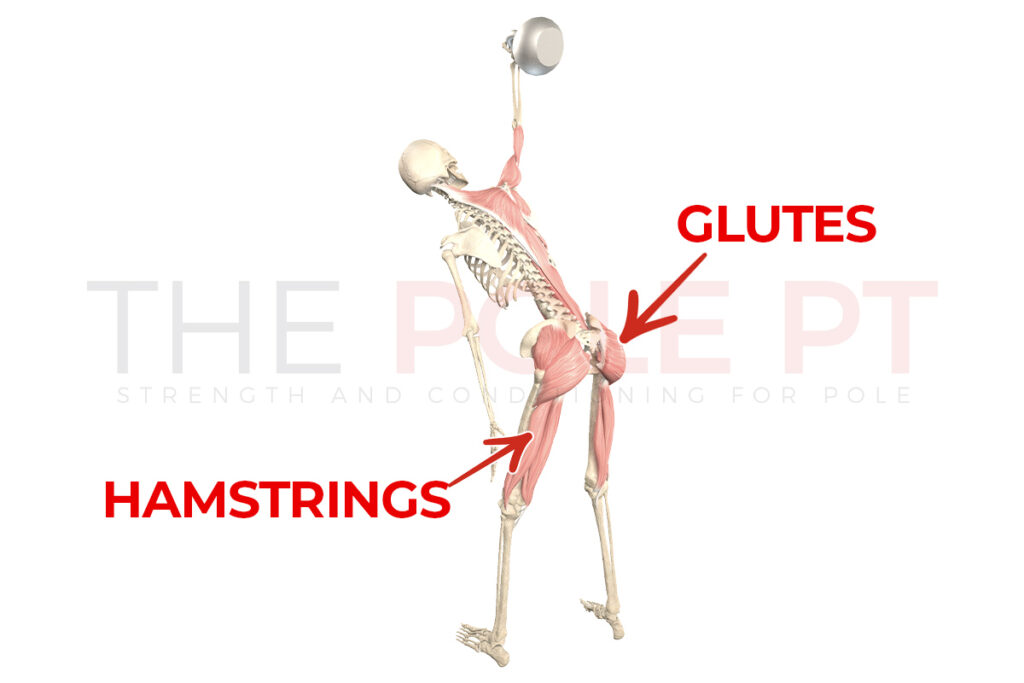
But the offset position of the windmill challenges our hip stability in a different way. Given that we’re very rarely keeping our hips in a rigid ‘square’ / neutral position when we’re on the pole, exercises like the windmill that take us outside of that neutral position (and especially when combined with other movements like spinal rotation and overhead stability) more closely reflect the types of demands we face on the pole.
As the windmill incorporates spinal rotation, it can also help to improve thoracic mobility and awareness as well as the strength and stability of our core. In particular, it challenges our obliques and erector spinae as we work to rotate our spine and resist lateral flexion (side bending).
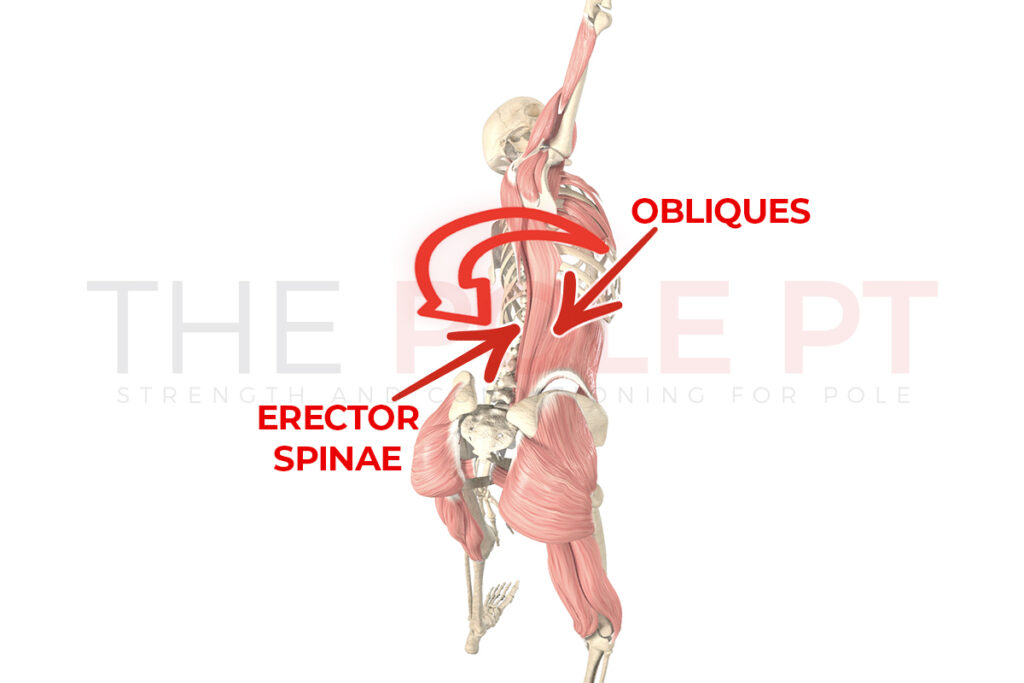
Last but by no means least, the windmill helps to improve shoulder strength, working our shoulder stabilisers (primarily our rotator cuff muscles as well as our serratus anterior), through that overhead position, which is obviously SUPER important for pole dancers.
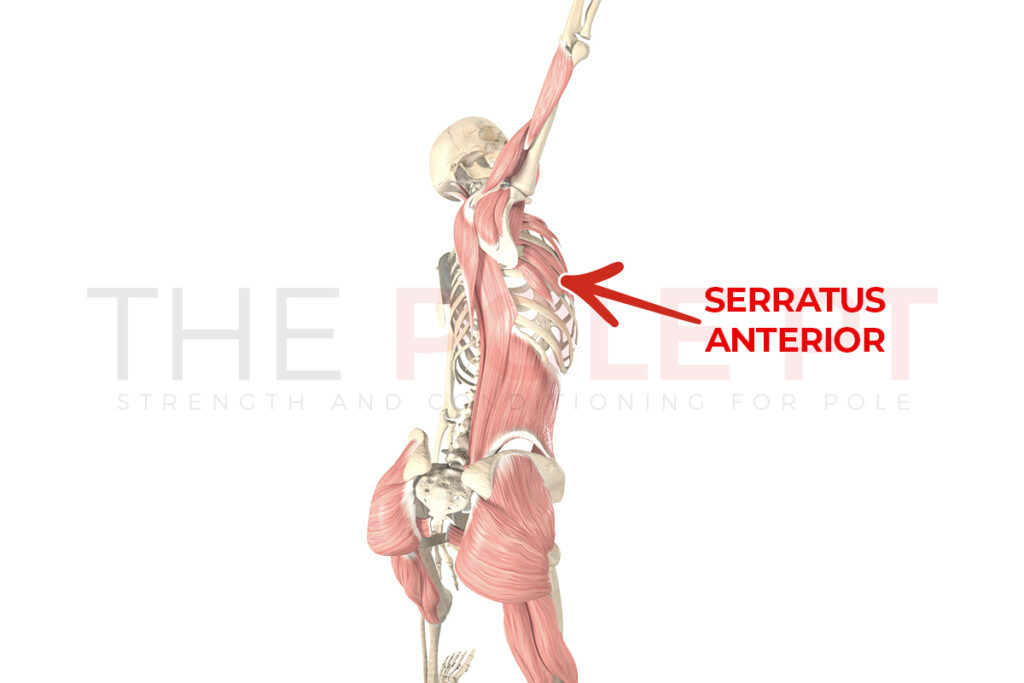
All of those ^ things help make us better pole dancers, too! Magic!
So let’s quickly review our checklist of windmill benefits:
- Hamstring strength (through lengthened position)
- Glute strength
- Hip stability
- Spinal rotation mobility
- Core strength
- Shoulder strength and stability
Not only are all those individual elements important for pole, but the combination of them all together in one movement is really similar to the way we move on the pole. In fact, we’re quite often combining “off centre” hip hinges – or at least some form of hip flexion – with spinal rotation and shoulder stability demands in pole. It’s kinda like our whole thing!
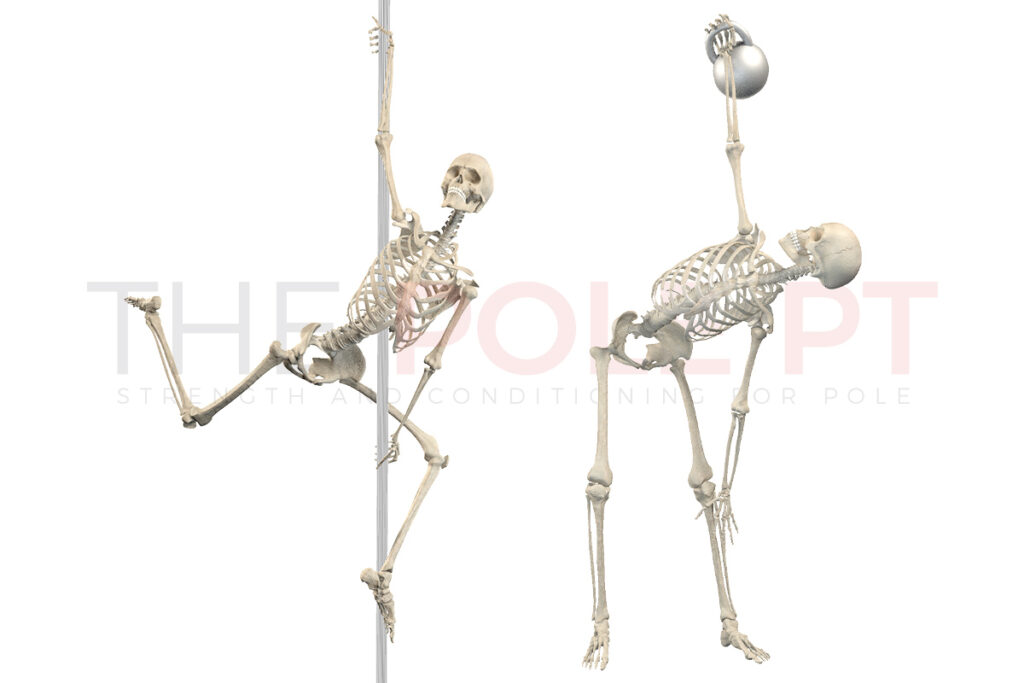
Working these different elements (both individually and simultaneously) OFF the pole means we can progressively load them while we build strength, high quality movement mechanics and awareness that will really help us to build strength and resiliency for pole.
How to do the windmill exercise
I usually start clients with a kneeling version of the windmill which I’ve demonstrated in the video below.
Btw… I’m using a kettlebell here, but you can switch for a dumbbell instead!
If you want to give the windmill a go, I’d encourage you to perform this kneeling version without a weight at first, while you get used to the movement pattern.
One of the key cues for this exercise is to remember that the movement is technically supposed to be more of a hip hinge than a side bend. Not that I have anything against side bending – we do that a lot in pole, too! Side bending is another movement pattern we should build strength in, for sure! But (at least for this version of the exercise), we’re focusing on controlling and resisting that side bend as we hip hinge and rotate!
To focus on resisting that side bend, it can help to think about keeping the distance between your ‘hip bones’ and ribs consistent throughout the movement.
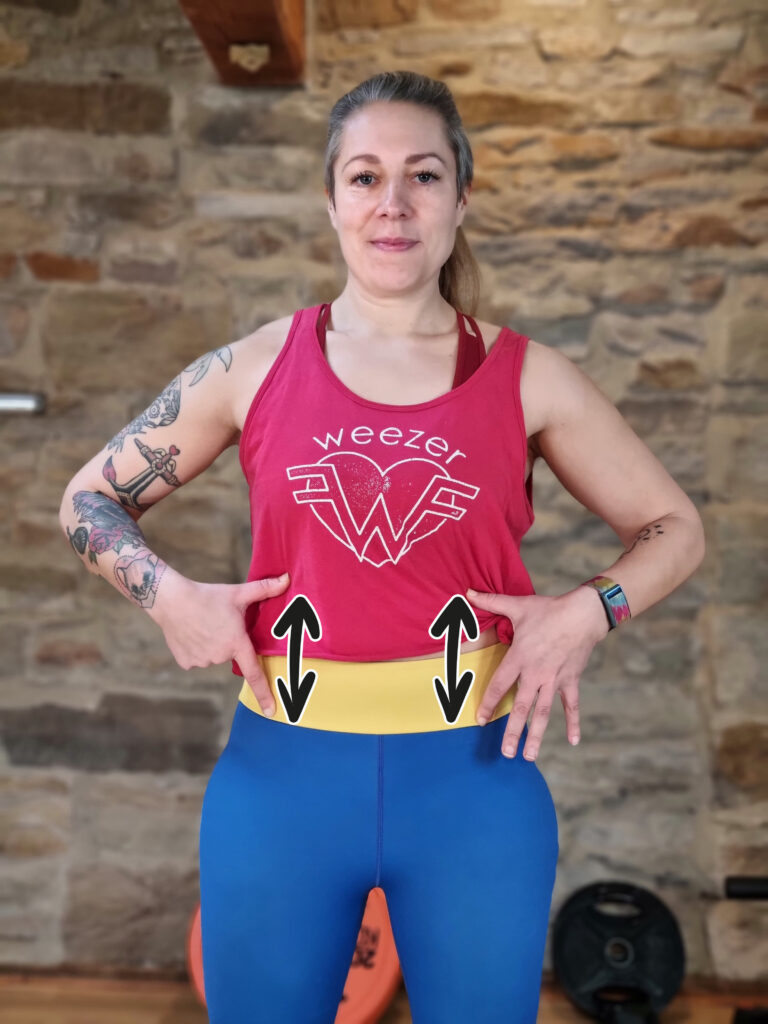
For bonus points, you can even keep your hands in the position shown above – with your thumb on your ribs and finger on your ‘hip bones’ as you perform the unweighted kneeling windmill movement pattern. This can help reinforce and understand what that feels like before you start adding weight to the movement. Notice if your thumb and fingertips start to come towards each other on that bottom side or move away from each other on that top side as you lower and lift. The aim is to keep the distance the same throughout.
Once you’ve squeezed all the juice you can from the kneeling windmill, it can then be progressed to the standing version which looks like this…
Here’s a reminder of the main cues I’m using for this standing windmill:
- 45 degree (ish) turn of feet to opposite direction of the weight
- Keep the weight above your shoulder at all times
- Actively push the weight to the ceiling
- Look at the weight
- Soft bend in the knees – and bend the ‘front’ knee more if that feels more comfortable!
- Push hips back in opposite direction to toes
- Focus on the hip hinge and resisting the side bend
- Squeeze glutes to come back to start
- Work within the range that’s available to you – the quality of the movement matters more than how low you can go!
In summary: The windmill is a long-standing favourite of mine. It combines so many different things into one movement: overhead push, shoulder stability, spinal rotation, core strength and a hip hinge. So if you’re trying to kill a few flies with one slap, the windmill is a multitasking time-saver of a movement to include in your exercise programming for pole!
Want to know how to incorporate exercises like the windmill into your training for pole? My book Strength and Conditioning for Pole has all the answers! Available now in paper copy or ebook! Come, let’s pole nerd …and get hella strong in the process!


